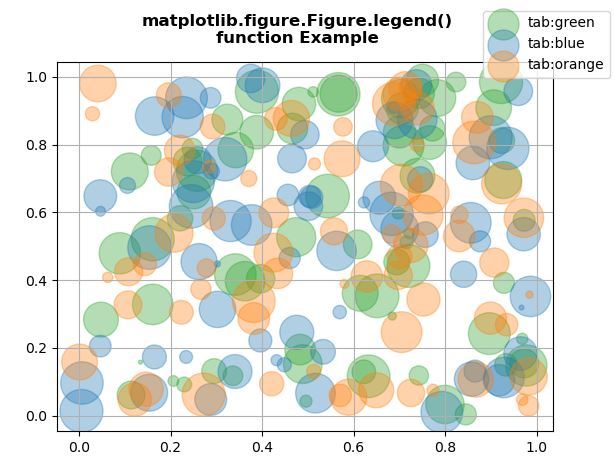Matplotlib es una biblioteca en Python y es una extensión matemática numérica para la biblioteca NumPy. El módulo de figura proporciona el artista de nivel superior, la figura, que contiene todos los elementos de la trama. Este módulo se utiliza para controlar el espaciado predeterminado de las subparcelas y el contenedor de nivel superior para todos los elementos de la parcela.
método matplotlib.figure.Figure.legend()
El módulo de figura del método legend() de la biblioteca matplotlib se usa para colocar una leyenda en la figura.
Sintaxis: legend(self, *args, **kwargs)
Parámetros: este método acepta los siguientes parámetros que se analizan a continuación:
- handles: este parámetro es la lista de artistas (líneas, parches) que se agregarán a la leyenda.
- etiquetas: este parámetro es la lista de etiquetas para mostrar junto a los artistas.
Devoluciones: este método devuelve la instancia matplotlib.legend.Legend .
Los siguientes ejemplos ilustran la función matplotlib.figure.Figure.legend() en matplotlib.figure:
Ejemplo 1:
# Implementation of matplotlib function
import matplotlib.pyplot as plt
fig, ax = plt.subplots()
line1, = ax.plot([1, 2, 3],
label ="Line 1",
color ="black",
linewidth = 4,
linestyle =':')
line2, = ax.plot([3, 2, 1],
label ="Line 2",
color ="green",
linewidth = 4)
first_legend = ax.legend(handles =[line1],
loc ='upper center')
ax.add_artist(first_legend)
fig.legend(handles =[line2], loc ='lower center')
fig.suptitle("""matplotlib.figure.Figure.legend()
function Example\n\n""", fontweight ="bold")
plt.show()
Producción:
Ejemplo 2:
# Implementation of matplotlib function
import numpy as np
np.random.seed(19680801)
import matplotlib.pyplot as plt
fig, ax = plt.subplots()
for color in [ 'tab:green', 'tab:blue', 'tab:orange']:
n = 70
x, y = np.random.rand(2, n)
scale = 1000.0 * np.random.rand(n)
ax.scatter(x, y, c = color, s = scale, label = color,
alpha = 0.35)
fig.legend()
ax.grid(True)
fig.suptitle("""matplotlib.figure.Figure.legend()
function Example\n\n""", fontweight ="bold")
plt.show()
Producción:
Publicación traducida automáticamente
Artículo escrito por SHUBHAMSINGH10 y traducido por Barcelona Geeks. The original can be accessed here. Licence: CCBY-SA